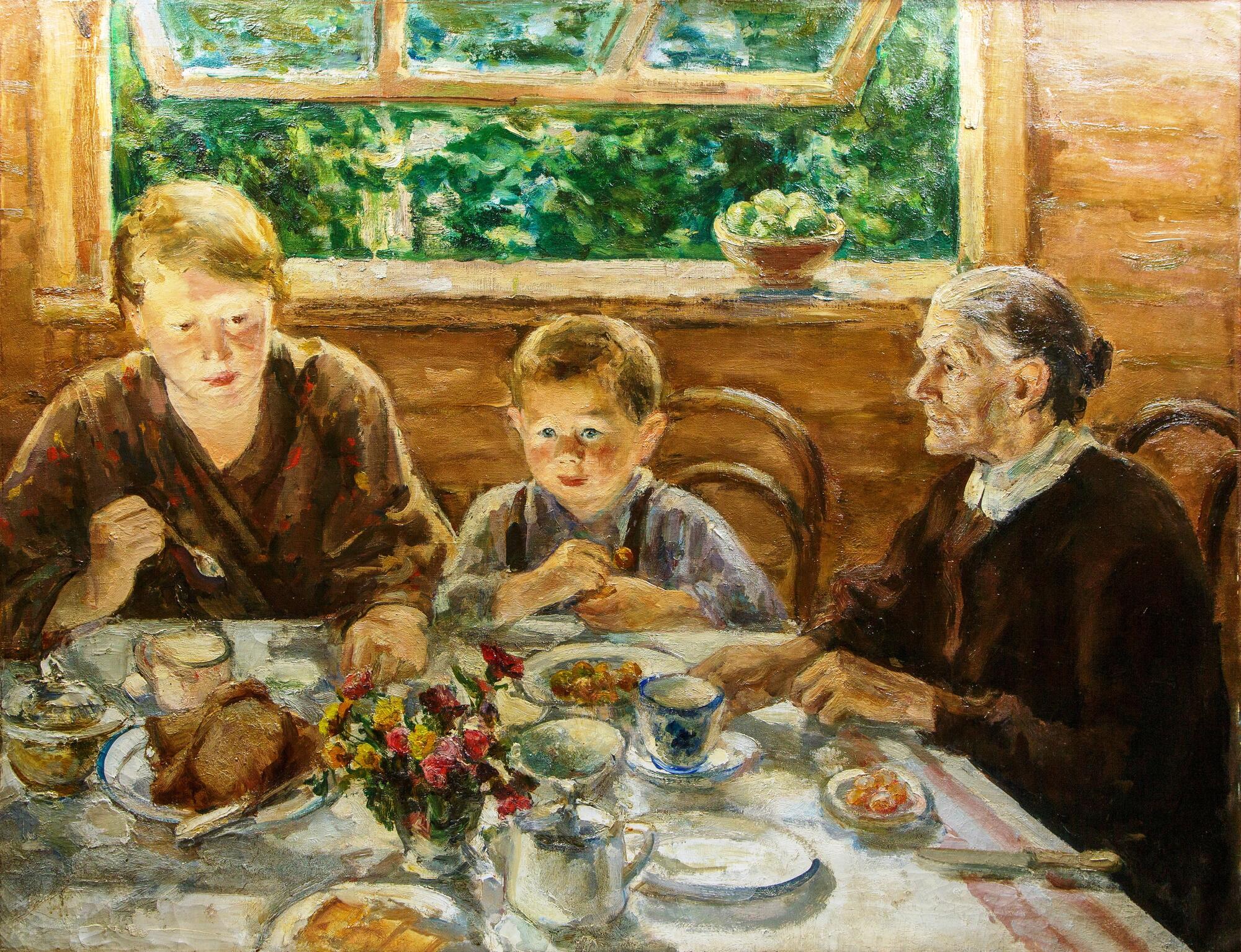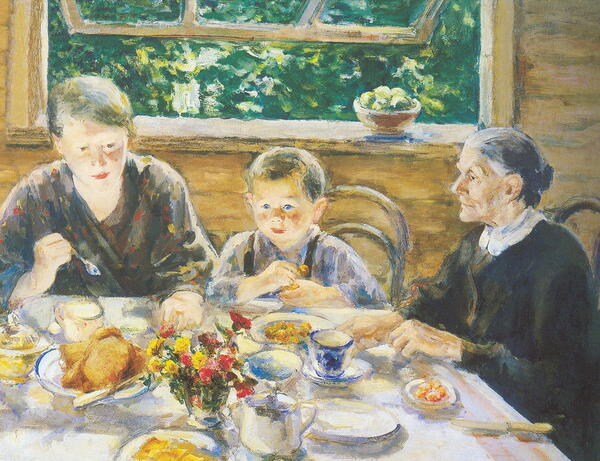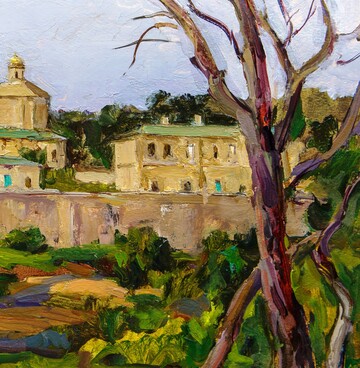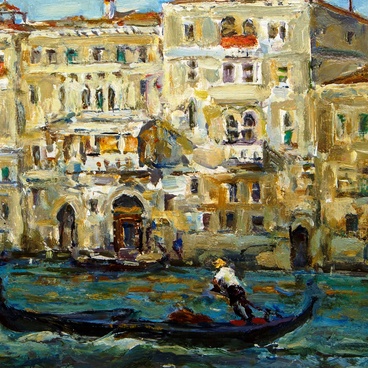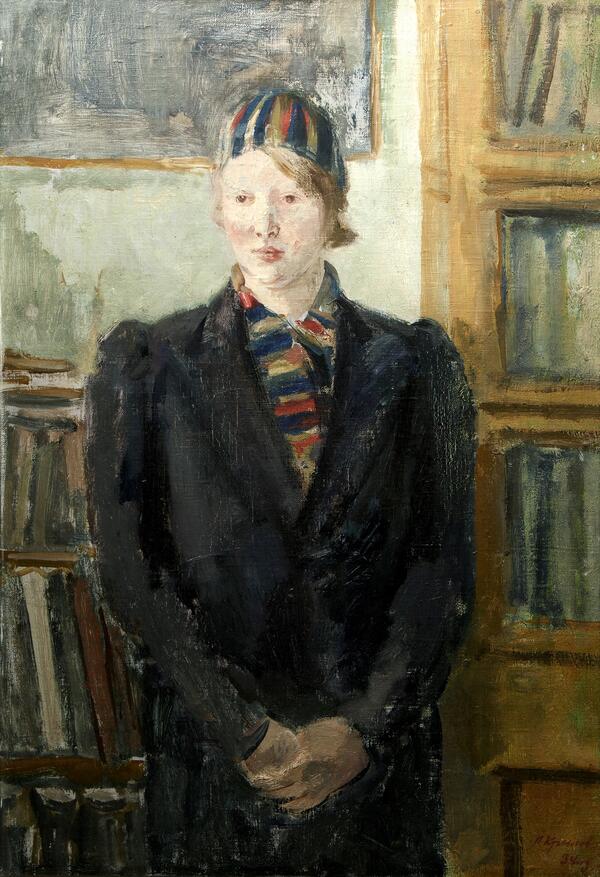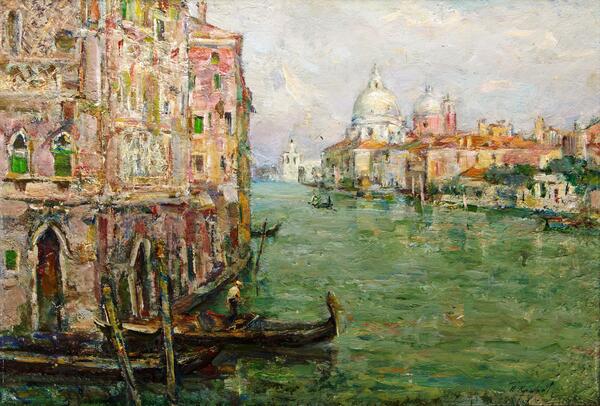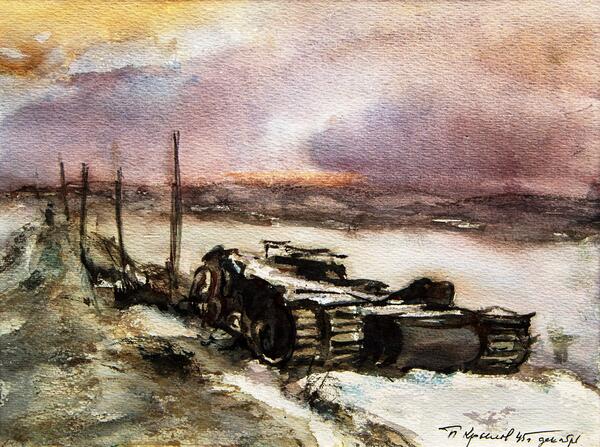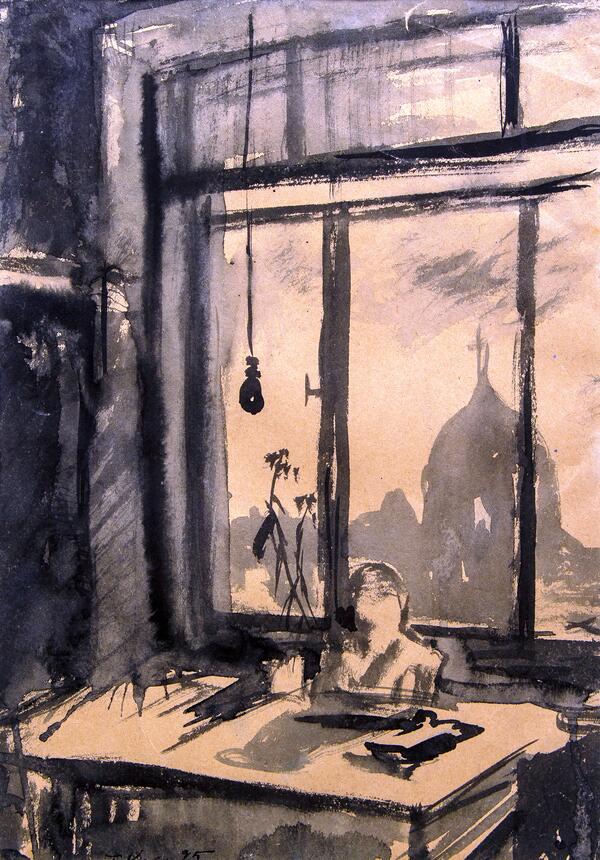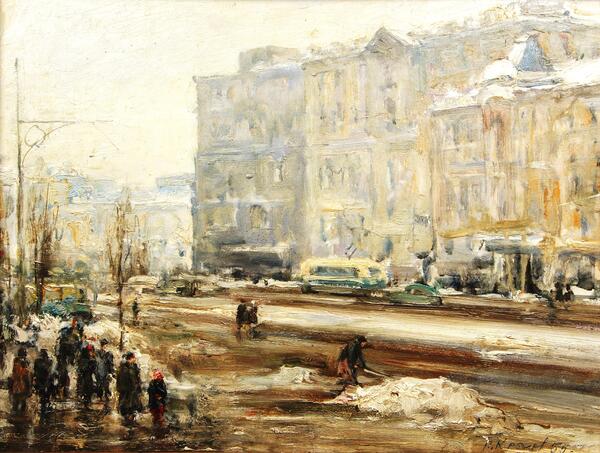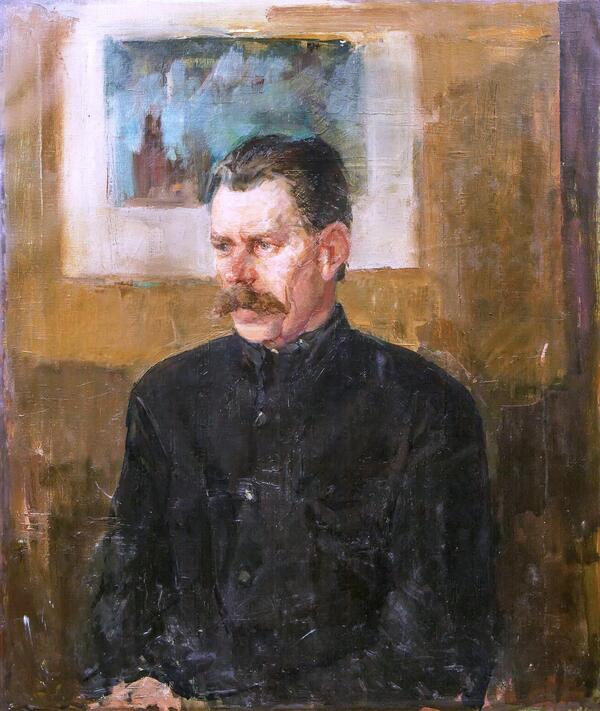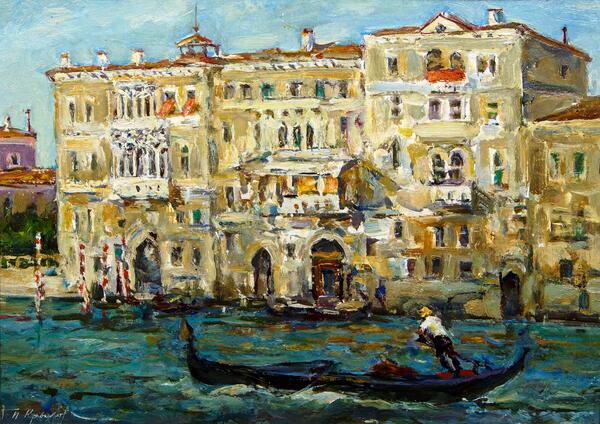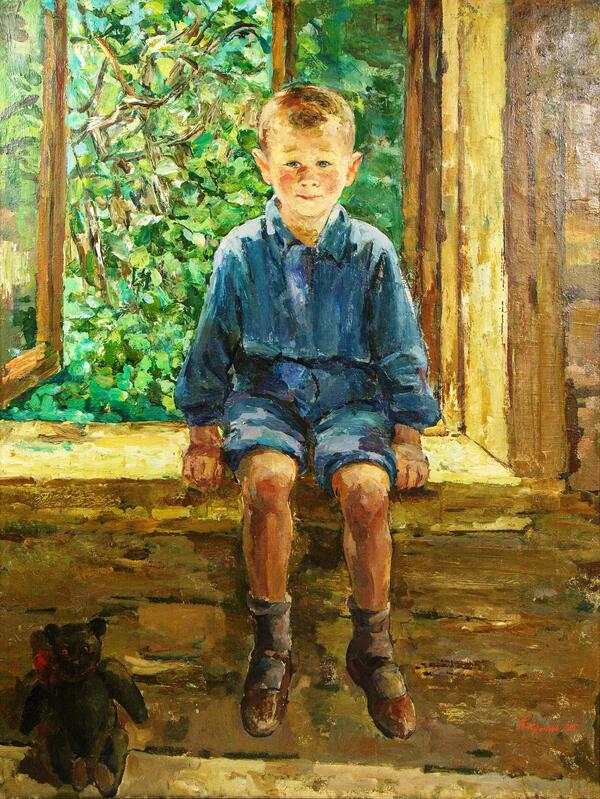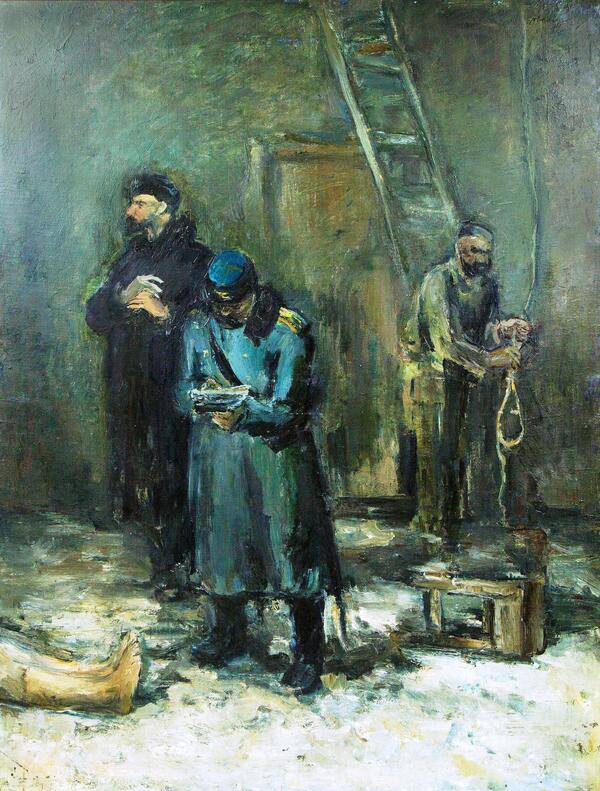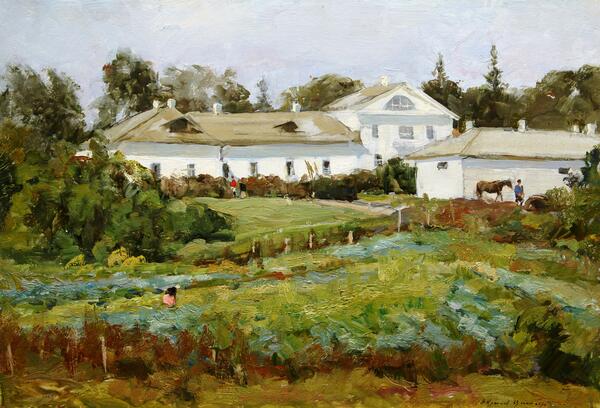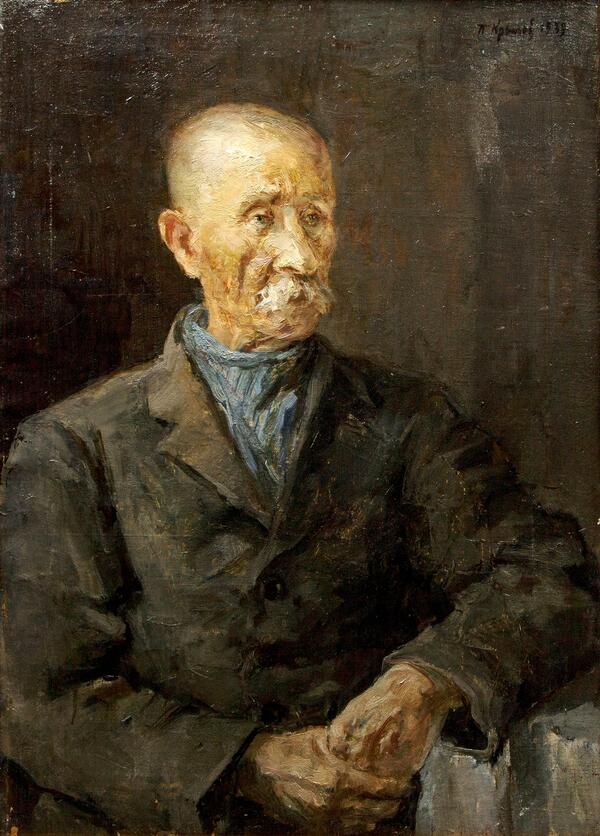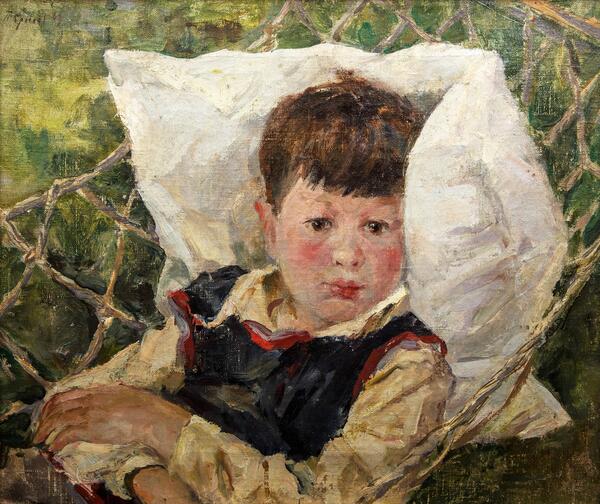Family and childhood were among the favorite subjects in the art of the Soviet artist Porfiry Nikitich Krylov.
The painting “Breakfast on the Terrace” became a symbol of his domestic bliss. The artist portrayed the people most dear to him: his wife Elena Anatolyevna Krylova, their son Andryusha (Andrey) and nanny Maria, who often helped the Krylov family and became close to them. The boy in the painting is five years old, he recently lost his mother — the artist’s first wife, Sophia Smirnova.
The narrative in the painting is rather simple. It is imbued with sunlight and a sense of quiet joy. On a warm summer morning, the family gathered for breakfast at a table set on a cozy terrace. Bright greenery with cheerful highlights in the garden is peeking out through the window. A white tablecloth, a bowl with apples and a bouquet of garden flowers give the painting its special charm and mood.
The front edge of the table is cut off from the viewer as though they are a guest and are sitting next to the people in the picture who seem a little bemused by the unexpected visitor. Their poses make it clear very eloquently: wife Elena’s head is tilted as she looks away in contemplation, Andrey, the artist’s son, is watching something in the distance, and the nanny is looking straight ahead, her gaze serious and stern. It is as if the artist urges the viewer to cherish the simple moments spent with loved ones under a peaceful sky.
“Breakfast on the Terrace” was painted in the village of Tatarovo near Moscow. There, in the 1930s, Krylov rented a dacha for vacation with family and friends. It was in Tatarovo that the artist created some of his most striking canvases — “Breakfast on the Terrace”, a portrait of his son Andryusha, small genre sketches of the nanny Masha knitting on this exact terrace, as well as portraits of his wife Elena and son Tolya resting in a hammock. Porfiry Krylov would come back to the depictions of children and life in the country house once more when painting his granddaughter Alyonka.
Porfiry Krylov was a
member of the “Kukryniksy” artistic group, a regular contributor to the
newspaper “Pravda” (Truth) and the magazine “Krokodil” (Crocodile). The artist
was known for his sharp political satire, lyrical landscapes and floral still
lifes. He represented the Soviet Union at international exhibitions, was
awarded five Stalin Prizes, the title of People’s Artist of the USSR, Hero of
Socialist Labor, along with many other medals and awards.
